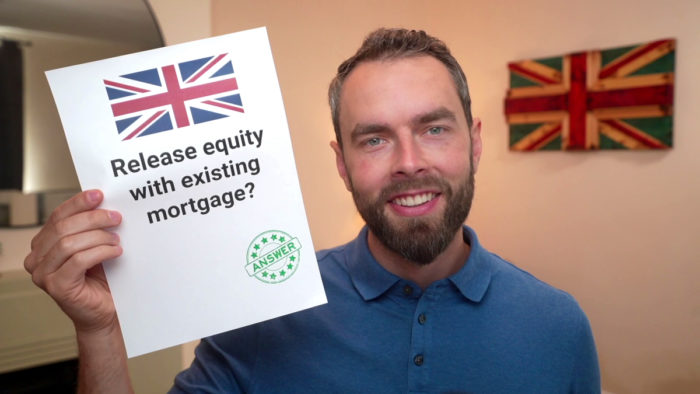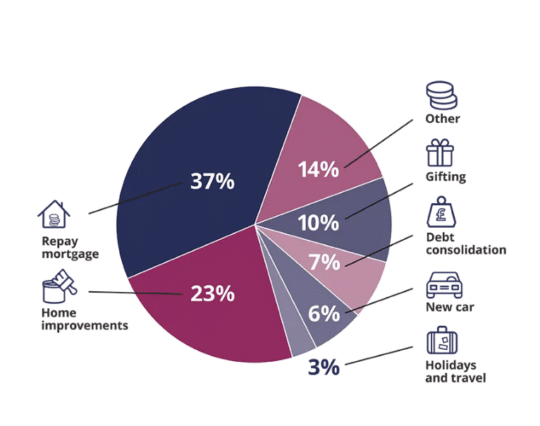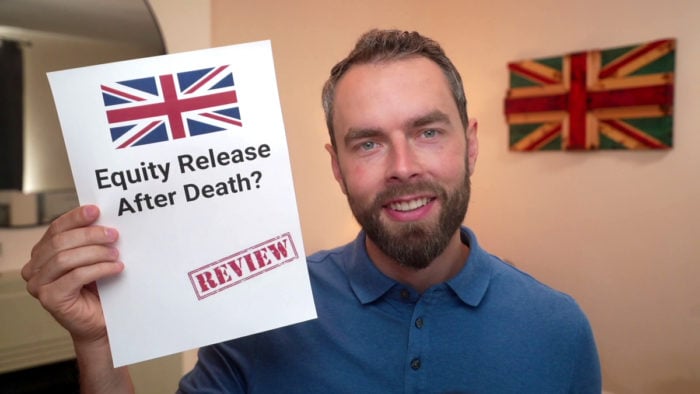Equity Release with an Existing Mortgage? Complete Guide
Our preferred equity release adviser is Age Partnership. For free and impartial money advice you can visit MoneyHelper.

Our preferred equity release adviser is Age Partnership. For free and impartial money advice you can visit MoneyHelper.
“Are you interested in how you can release equity from your home even if you have a mortgage? This guide is here to help. Each month, over 7,000 people come to our website to learn about equity release. We know that this process can seem puzzling, but we have loads of helpful advice to guide you.
In this guide, we’ll cover:
- What home equity is.
- How to release equity from your mortgage.
- The different ways to release equity.
- If you can use equity to pay off your mortgage.
- What happens to your mortgage when you release equity.
We understand that you might be worried or unsure about releasing equity from your home. It can be a big decision. But don’t fret; we’re here to help explain everything in a simple way.
We’ve offered useful information to several other people in a similar position, so we know the questions you might have.
Let’s dive in and learn more about equity release.”
Can I release equity from my mortgage?
You cannot release equity from a mortgage, but you can release equity from your home. Equity is built up in assets rather than loans, and paying off a loan like a mortgage will increase your equity in your home as long as the value of your property doesn’t significantly decrease.
Can I use it to pay off my mortgage?
It is possible to access some of the equity in your home to pay off your existing mortgage. This would only be worthwhile if the interest applied to the new loan secured by the home equity is cheaper than your mortgage repayments. However, you should look beyond interest and also consider early repayment charges when you pay off your mortgage early, and set up and closing costs on the new loan.
Alternatively, you may be using the equity in one property to pay off your mortgage on a different property you own.
Do you have to be mortgage-free to do it?
Most methods of releasing equity do not require you to have paid off your mortgage. However, most equity release schemes used by people over 55 may require you to be mortgage-free to access a loan. We have more on this shortly.
How can you take it out from your home?
There are a number of ways to release equity from your home, including:
- Secured loans
- Equity release products (e.g. lifetime mortgage)
- Second charge mortgages (e.g. home equity loan)
- Remortgaging to release equity
These Options are suitable in different situations, which is best discussed with a financial adviser.
How equity release could help
More than 2 million people have used Age Partnership to release equity since 2004.
How your money is up to you, but here’s what their customers do…
Find out how much equity you could release by clicking the button below.
In partnership with Age Partnership.
Option #1: Equity release (an option for over 55s!)
Equity release is a method of borrowing for senior homeowners who have a lot of home equity. They can get a loan and never have to make any monthly payments to repay. The loan is only repaid after death or after moving into long-term care. When either of these events happen, their property must be sold to repay the loan and any interest that has accumulated on the loan.
The different types
There are two equity release products used in the UK. These are called a lifetime mortgage and a home reversion plan. The latter is more common than the former, and it has some variations, such as an enhanced lifetime mortgage (for people with poor health to access more equity than standard) or a drawdown lifetime mortgage (to access a drawdown facility rather than a lump sum amount).
Lifetime mortgage
Lifetime mortgages work by allowing the homeowner to access up to 60% of their home equity as a lump sum, which is charged with a fixed interest rate. Neither the loan nor the interest has to be repaid each month, so the debt simply grows bigger and bigger over time. When the homeowner dies or moves into long-term care, the updated total debt must be repaid from the sale proceeds of their property.
Home reversion plan
A home reversion plan can allow the homeowner to access up to 80% of their equity on average as a lump sum or drawdown, which is not charged with any interest. The loan is agreed in exchange for a greater percentage of the property’s sale proceeds in the future. For example, the homeowner could receive 30% of their equity straight away, but they must give the lender 70% of the home’s sale value after death or after moving into residential care.
Who qualifies?
Equity release is exclusively available to senior homeowners over the age of 55. If there are two homeowners then both need to be at least 55 years old. There can sometimes be maximum age limits, usually around 85. You must be releasing equity from your main home and not a holiday home or rental investment, and the property could need to meet a minimum valuation to be accepted.
Can I get it if I already have a mortgage?
Most equity release lenders will require the property to have no outstanding debts attached. This means that you will need to have paid off all of your residential mortgage to access a lifetime mortgage or home reversion plan. You’ll also need to have paid off any secured loans attached to the property, such as home equity loans or secured home improvement loans.
There may be a smaller percentage of equity release providers that will allow you to take out a lifetime mortgage or other equity release plan with an existing mortgage. We have details on this below.
Getting one with an existing mortgage
As mentioned, a small number of equity release companies may accept applications from homeowners who have yet to pay off all of their residential mortgage debt. However, these lifetime mortgages and home reversion plans will typically require your existing mortgage debt to be very small. If you still owe a lot on your mortgage then an equity release plan will be off the cards.
Moreover, the equity release lenders that do allow you to use equity release with an outstanding mortgage could apply special terms to the agreement. For example, getting equity release with an existing mortgage may require you to use some of your equity release loan to pay off the mortgage lender. Thus, you will only be able to get a lifetime mortgage if you agree to use some of the money to clear all debt attached to the property.
The Council
If you do decide to look for an equity release plan, you should get financial advice first and only consider lenders that are authorised and regulated by the Financial Conduct Authority. For additional benefits and assurances, you should also only consider equity release providers that are members of the Equity Release Council.
This council is a voluntary membership group that asks lenders to stick to the group’s rules, which are made for the benefit and protection of homeowners. For example, one of the council’s rules is the negative equity guarantee, stating that no lender can attempt to recover lifetime mortgage debts that exceed the sale value of the property. You, your estate or your estate beneficiaries will never have to pay the shortfall on a debt when that debt is larger than what your home sells for.
Option #2: Second charge mortgages
If you’re not over 55 or have not paid enough of your mortgage off to use equity release, you may want to consider a second charge mortgage.
A first charge mortgage is a mortgage you take out to buy your home, also known as a residential mortgage. So a second charge mortgage is an additional loan secured by your property which is separate from the first mortgage. They have separate monthly payments and could even be with different lenders.
The second charge mortgage is secured by your available home equity and is a way of borrowing larger amounts not usually available through personal loans. For example, if you have £100,000 equity in your home, you might be able to get a second charge mortgage worth up to £80,000.
The different types
A second charge mortgage refers to two financial products called a home equity loan and home equity line of credit (HELOC). Fundamentally they work in similar ways, but there are some key differences to note.
Home equity loan
A home equity loan is simply a loan that is secured against your home equity. It applies a fixed interest rate and monthly repayments begin immediately. These loans are often used to complete home improvements.
Home equity line of credit (HELOC)
A home equity line of credit is also secured by home equity, but instead of providing a lump sum loan, the money is accessed over a drawdown period that could last as long as two years. During the drawdown period, only a variable interest is repaid each month, and once the period ends, the loan capital and the interest become repayable.
Option #3: Remortgaging
You don’t have to add a second debt to your home to release equity. You can change your existing mortgage and simultaneously borrow more against your available home equity to release cash. This money could be used for any purpose, including home renovations, car purchases or even debt consolidation.
How does it work?
Remortgaging is when you trade in your existing mortgage deal for a new one, either with your current lender or with a different provider. The common reason for doing so is to get a better interest rate and save some money. But the other reason is to borrow additional money on the new mortgage. This additional money is secured by some of your available home equity.
One thing to be aware of when you remortgage to release equity is that you might have to pay early repayment fees for paying off the first mortgage. These can be expensive, which you should consider against any second charge mortgage options. A financial adviser will be able to help you make an advantageous decision.
Join thousands of others who release equity
Age Partnership have helped over 2 million people release equity from their home.

Mrs Wareham
“I am more than pleased to have taken out Equity Release with Age Partnership.”
Reviews shown are for Age Partnership. Search powered by Age Partnership.
What happens to your mortgage?
What happens to your mortgage when you release equity will all depend on the method of releasing equity you use.
If you use an equity release scheme with a small existing mortgage, you will probably be forced to pay it all off as part of the credit agreement. But with a second charge mortgage, nothing changes to your existing mortgage.
Things to consider
Equity release will involve a home reversion or a lifetime mortgage, which is secured against your property and will reduce the value of your estate and impact funding long-term care. Our equity release partner, Age Partnership provides a personalised illustration to explain the full details. The money you release, plus the accrued interest is then repaid when you die or move into long-term care. Advice is required before proceeding with equity release and any existing mortgage must be repaid. Age Partnership provide initial advice for free and without obligation. Only if your case completes would Age Partnership’s advice fee of £1,895 be payable. Other lender and solicitor fees may apply.


